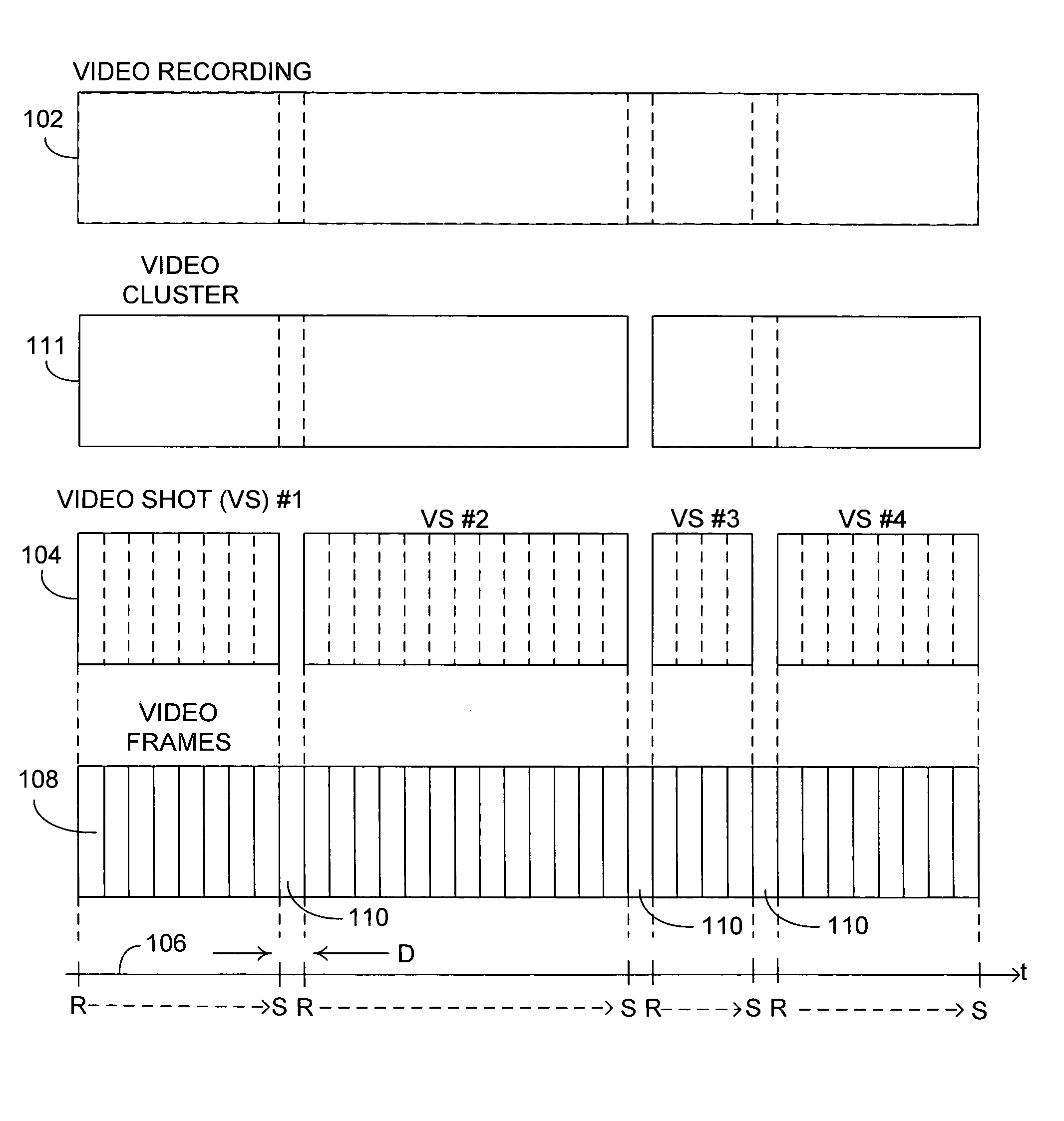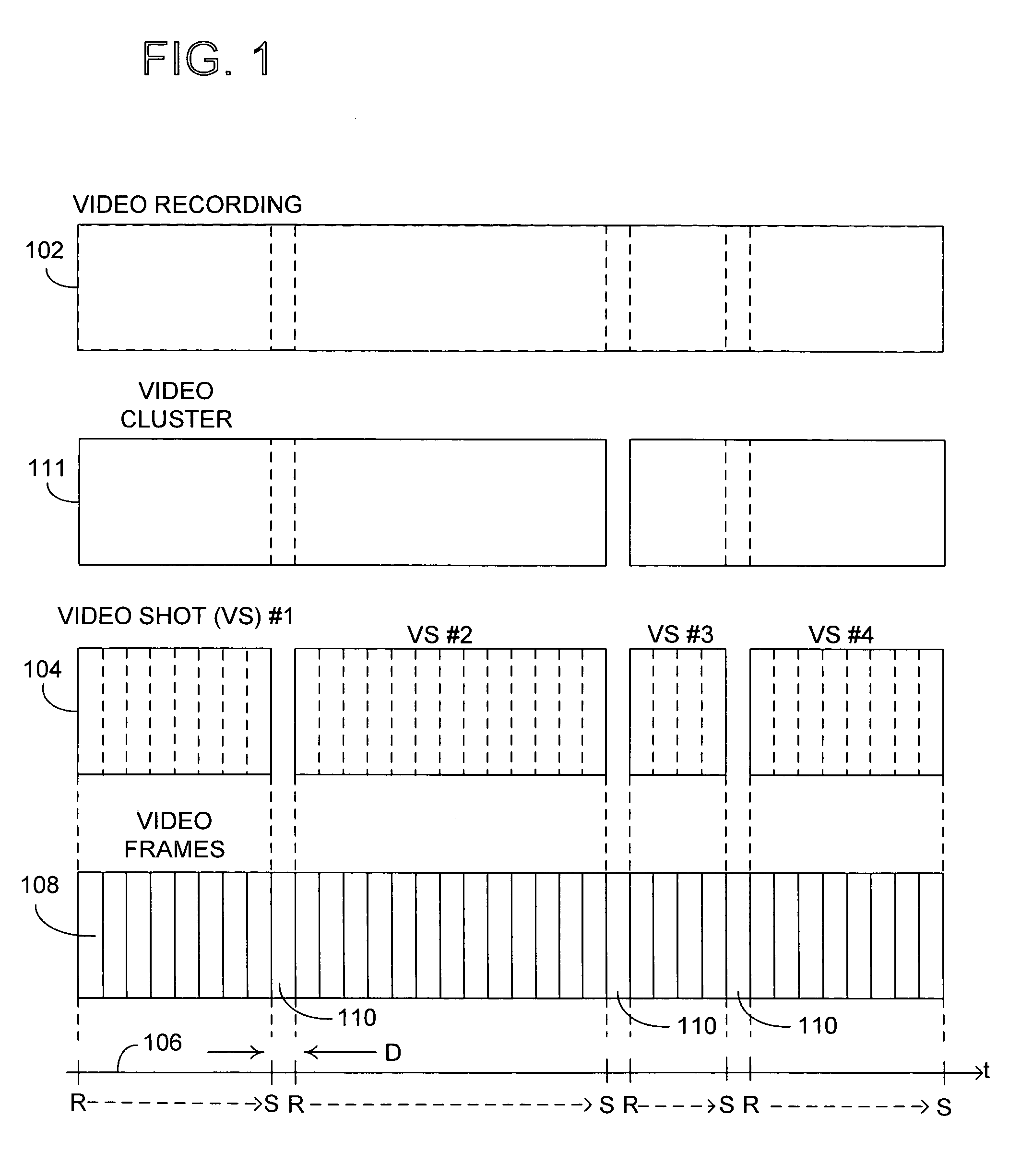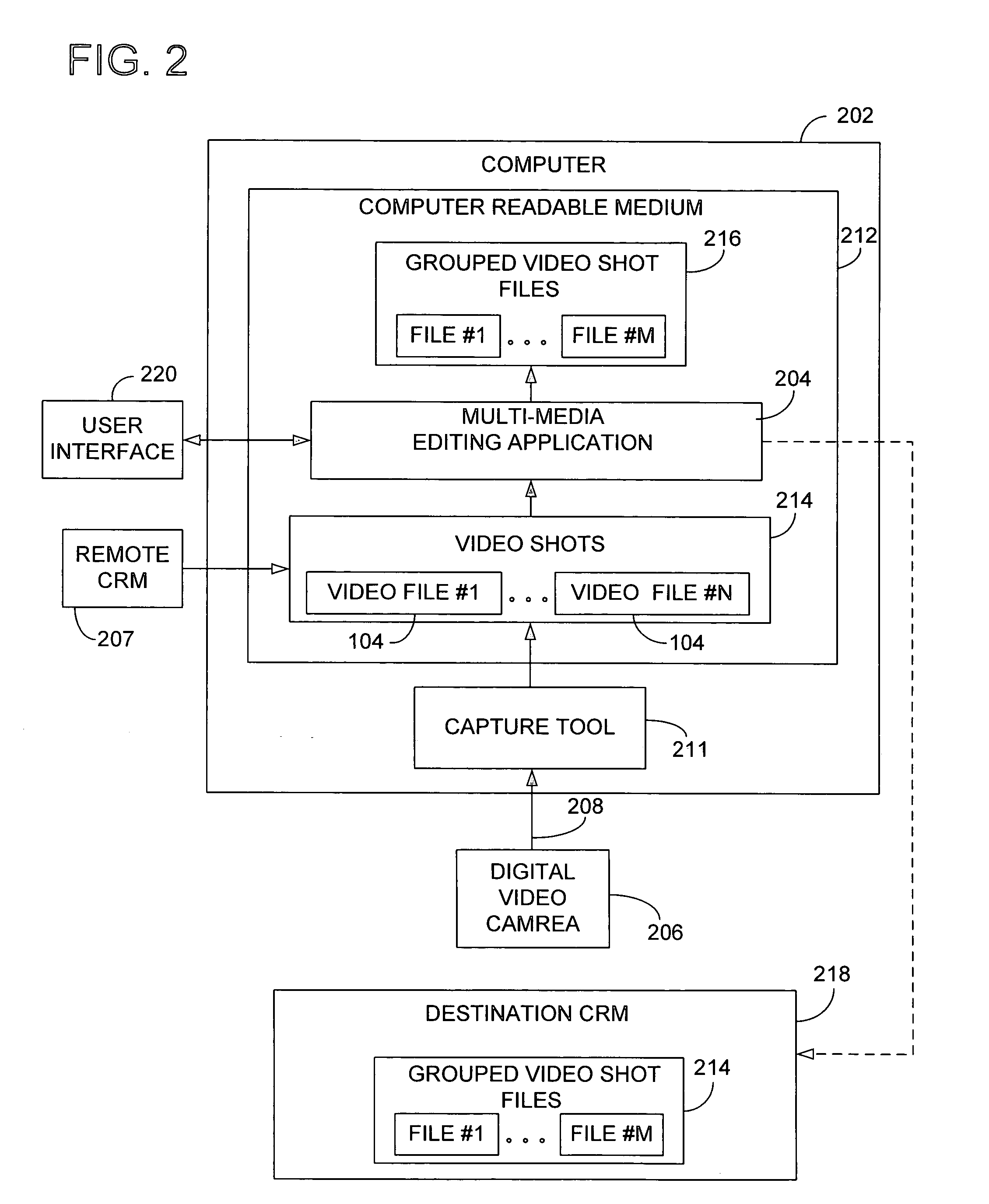Digital video segmentation and dynamic segment labeling
a dynamic segment and video technology, applied in the field of digital video segmentation and image and video clustering, can solve the problems of difficult to find and playback a segment of video showing a specific event, existing meas provide little or no assistance, and the grouping is relatively unintelligen
- Summary
- Abstract
- Description
- Claims
- Application Information
AI Technical Summary
Benefits of technology
Problems solved by technology
Method used
Image
Examples
Embodiment Construction
[0030] Referring first to FIG. 1, an exemplary block diagram illustrates three fundamental levels of a digital video file 102 or a digital video library consisting of multiple video files 102. At a fundamental or base level, video file 102 comprises multiple frames 108, each frame typically having a fixed duration D and a known date and time at which it began recording. As known to those skilled in the art, the duration of a video frame is typically a small fraction of one second (e.g., {fraction (1 / 30)}, {fraction (1 / 25)} or {fraction (1 / 24)}) but may be any other value or may vary from frame to frame within a single video file.
[0031] At the next higher level, digital video file 102 comprises multiple video shots 104 including one or more video frames 108. As shown by timeline 106, each video shot 104 represents a continuously recorded portion of the digital video file 102 between a record operation R and a stop operation S of the recording device. Within video shot 104, each vide...
PUM
| Property | Measurement | Unit |
|---|---|---|
| time | aaaaa | aaaaa |
| time | aaaaa | aaaaa |
| time | aaaaa | aaaaa |
Abstract
Description
Claims
Application Information
 Login to View More
Login to View More - R&D
- Intellectual Property
- Life Sciences
- Materials
- Tech Scout
- Unparalleled Data Quality
- Higher Quality Content
- 60% Fewer Hallucinations
Browse by: Latest US Patents, China's latest patents, Technical Efficacy Thesaurus, Application Domain, Technology Topic, Popular Technical Reports.
© 2025 PatSnap. All rights reserved.Legal|Privacy policy|Modern Slavery Act Transparency Statement|Sitemap|About US| Contact US: help@patsnap.com



